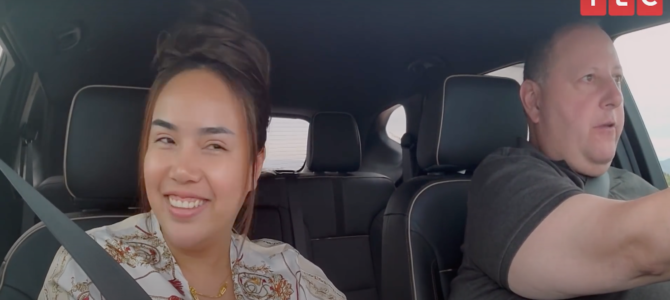
“90 Day Fiancé: Self Quarantined” is remarkable television for reasons unrelated to its entertainment value, which is actually somewhat lacking. It’s an experiment in removing important variables from reality TV production, and also a rare window into how the pandemic is hitting people who can’t isolate in a Southampton basement and self-medicate with fresh-caught scallops and rack of lamb.
The concept is that contestants film themselves, so while it’s doesn’t quite replicate “Big Brother’s” panopticon, it does remove cameramen and sound guys from the equation, which modifies the traditional psychological dynamic of reality TV. When the “Real Housewives” are squabbling over lunch, the meal looks intimate on television, but was filmed after they put mics on, let production into their home, and started interacting in front of a swarm of cameras controlled by other people.
When quarantined “90 Day Fiancé” stars interact, it’s mostly just them and their phones. While they know they’re filming for national television, it’s almost certainly easier for most to capture a more authentic version of their experience without cameramen in their faces. The footage absolutely feels raw and intimate in a way other reality TV does not.
Editors hit the right balance in keeping the production professional, with cuts and music, while also letting the lower-quality video and off-kilter angles speak for themselves, conveying a more credible and immediate sense of “reality.” It’s a strong argument for minimal production in reality TV, evidence that shows with good concepts and casting, you can capture something compelling without all the staging. Just send interesting people a Ring light, and you’re good to go.
Even so, “90 Day Fiancé: Self Quarantined” is hampered by the circumstances necessitating its creation. It’s slow. The show jumps from couple to couple (or non-couple), which helps the pace, but even with all the motion, sometimes just gets stuck—not unlike all of us in the past two months. Too much mundanity works only with the most entertaining couples, like Chantel and Pedro and David and Annie. (Especially David and Annie.)
In a macro sense, reality television has evolved little since its mid-aughts boom, which chained millennials to bombastic universes of purported reality, usually occupying one end of the socioeconomic spectrum or the other: “Here Comes Honey Boo Boo” or “Keeping Up with the Kardashians.” Shows like “Honey Boo Boo,” also on TLC, flirt with exploitative gawking at underprivileged communities, while simultaneously flirting with championing them.
“90 Day Fiancé: Self Quarantined” takes us into the suburbs, a place where a huge chunk of the country dwells, but rarely gets decent representation in the media. It takes us into lower-class homes and middle-class homes and maybe some upper-class homes. It even goes to prison.
It captures the reality of the pandemic as normal people are experiencing it, not late-night hosts or news anchors or celebrities. People get laid off. They live in small apartments alone. They move in with grandparents to save money. There’s been a weird strain of celebrities-are-just-like-us coverage during the pandemic, as though seeing a multimillionaire like Jimmy Fallon isolate with his adorable kids, or seeing people’s houses on cable news creates a meaningfully relatable experience. On “90 Day Fiancé: Self Quarantined,” life looks more like it does for the rest of us.
Of course, the subjects of “90 Day Fiancé” are not entirely next-door-neighbor types. They’re participants in one of television’s most bizarre reality shows. But they live functionally normal lives, socioeconomically and otherwise. Coupled with the exceptionally raw production process, that makes “90 Day Fiancé: Self Quarantined” more than just an amusing binge. It’s time-capsule material.









